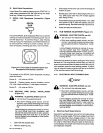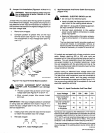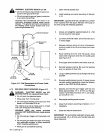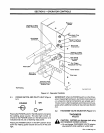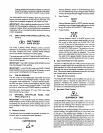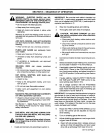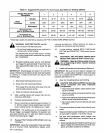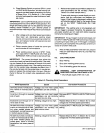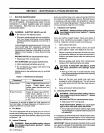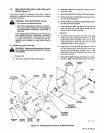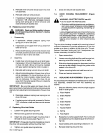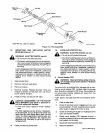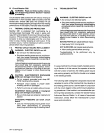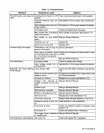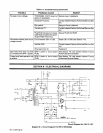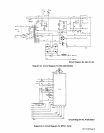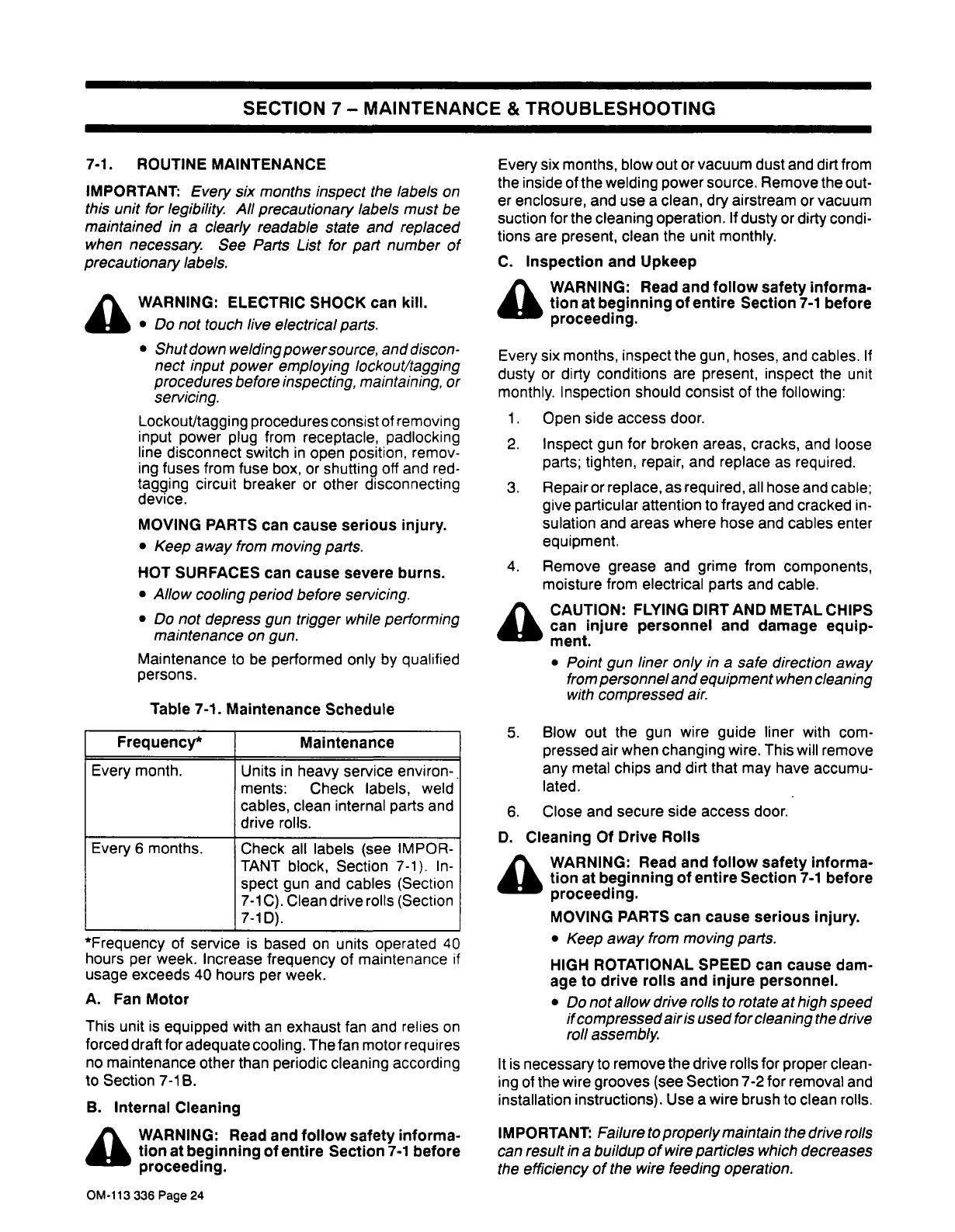
SECTION
7
MAINTENANCE
&
TROUBLESHOOTING
7-1.
ROUTINE
MAINTENANCE
IMPORTANT:
Every
six
months
inspect
the
labels
on
this
unit
for
legibility.
All
precautionary
labels
must
be
maintained
in
a
clearly
readable
state
and
replaced
when
necessary.
See
Parts
List
for
part
number
of
precautionary
labels.
a
WARNING:
ELECTRIC
SHOCK
can
kill.
Do
not
touch
live
electrical
parts.
Shutdown
welding
powersource,
and
discon
nect
input
power
employing
lockout/tagging
procedures
before
inspecting,
maintaining,
or
servicing.
Lockout/tagging
procedures
consist
of
removing
input
power
plug
from
receptacle,
padlocking
line
disconnect
switch
in
open
position,
remov
ing
fuses
from
fuse
box,
or
shutting
off
and
red-
tagging
circuit
breaker
or
other
disconnecting
device.
MOVING
PARTS
can
cause
serious
injury.
Keep
away
from
moving
parts.
HOT
SURFACES
can
cause
severe
burns.
Allow
cooling
period
before
servicing.
Do
not
depress
gun
trigger
while
performing
maintenance
on
gun.
Maintenance
to
be
performed
only
by
qualified
persons.
Table
7-1.
Maintenance
Schedule
Frequency*
Maintenance
Every
month.
Units
in
heavy
service
environ-
ments:
Check
labels,
weld
cables,
clean
internal
parts
and
drive
rolls.
Every
6
months.
Check
all
labels
(see
IMPOR
TANT
block,
Section
7-1).
In
spect
gun
and
cables
(Section
7-iC).
Clean
drive
rolls
(Section
7-iD).
*Frequency
of
service
is
based
cii
units
operated
40
hours
per
week.
Increase
frequency
of
maintenance
if
usage
exceeds
40
hours
per
week.
A.
Fan
Motor
This
unit
is
equipped
with
an
exhaust
fan
and
relies
on
forced
draft
for
adequate
cooling.
The
fan
motor
requires
no
maintenance
other
than
periodic
cleaning
according
to
Section
7-lB.
B.
Internal
Cleaning
a
WARNING:
Read
and
follow
safety
informa
tion
at
beginning
of
entire
Section
7-1
before
proceeding.
Every
six
months,
blow
out
or
vacuum
dust
and
dirt
from
the
inside
of
the
welding
power
source.
Remove
the
out
er
enclosure,
and
use
a
clean,
dry
airstream
or
vacuum
suction
for
the
cleaning
operation.
If
dusty
or
dirty
condi
tions
are
present,
clean
the
unit
monthly.
C.
Inspection
and
Upkeep
a
WARNING:
Read
and
follow
safety
informa
tion
at
beginning
of
entire
Section
7-1
before
proceeding.
Every
six
months,
inspect
the
gun,
hoses,
and
cables.
If
dusty
or
dirty
conditions
are
present,
inspect
the
unit
monthly.
Inspection
should
consist
of
the
following:
1.
Open
side
access
door.
2.
Inspect
gun
for
broken
areas,
cracks,
and
loose
parts;
tighten,
repair,
and
replace
as
required.
3.
Repair
or
replace,
as
required,
all
hose
and
cable;
give
particular
attention
to
frayed
and
cracked
in
sulation
and
areas
where
hose
and
cables
enter
equipment.
4.
Remove
grease
and
grime
from
components,
moisture
from
electrical
parts
and
cable.
a
CAUTION:
FLYING
DIRT
AND
METAL
CHIPS
can
injure
personnel
and
damage
equip
ment.
Point
gun
liner
only
in
a
safe
direction
away
from
personnel
and
equipment
when
cleaning
with
compressed
air.
5.
Blow
out
the
gun
wire
guide
liner
with
com
pressed
air
when
changing
wire.
This
will
remove
any
metal
chips
and
dirt
that
may
have
accumu
lated.
6.
Close
and
secure
side
access
door.
D.
Cleaning
Of
Drive
Rolls
a
WARNING:
Read
and
follow
safety
informa
tion
at
beginning
of
entire
Section
7-1
before
proceeding.
MOVING
PARTS
can
cause
serious
injury.
Keep
away
from
moving
parts.
HIGH
ROTATIONAL
SPEED
can
cause
dam
age
to
drive
rolls
and
injure
personnel.
Do
not
allow
drive
rolls
to
rotate
at
high
speed
if
compressed
air
is
used
forcleaning
the
drive
roll
assembly.
It
is
necessary
to
remove
the
drive
rolls
for
proper
clean
ing
of
the
wire
grooves
(see
Section
7-2
for
removal
and
installation
instructions).
Use
a
wire
brush
to
clean
rolls.
IMPORTANT:
Failure
to
properly
maintain
the
drive
rolls
can
result
in
a
buildup
of
wire
particles
which
decreases
the
efficiency
of
the
wire
feeding
operation.
OM-113
336
Page
24



